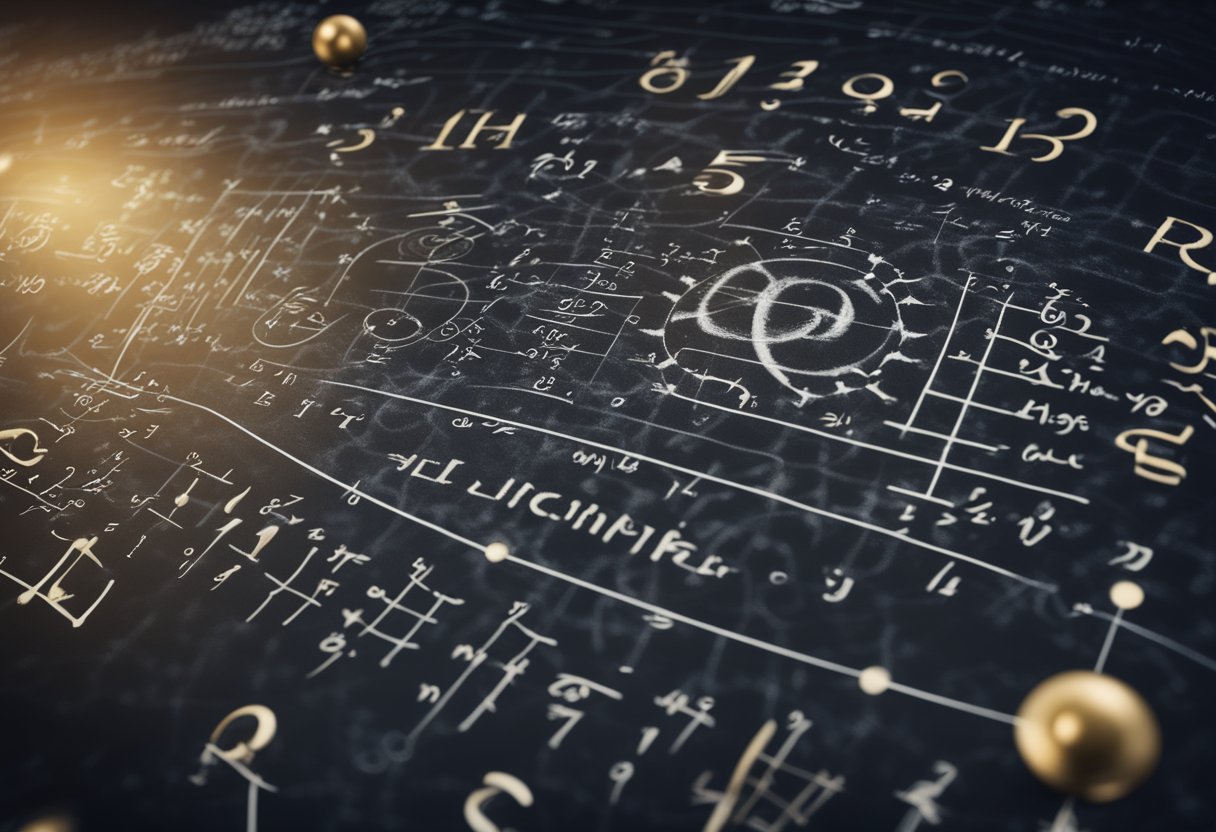
The landscape of theoretical physics has seen tremendous growth over the years, driven by the interplay between mathematical innovation and empirical discovery. We explore the nature of the universe by pushing the boundaries of our understanding from the tiniest particles to the vast reaches of cosmology. Significant strides in particle physics, particularly with the Standard Model, have illuminated the fundamental building blocks of matter, while quantum mechanics and quantum field theory have revolutionised our approach to understanding forces and interactions at the subatomic level.

Our journey into the cosmos, guided by theoretical advances, probes the nature of space-time and the origins of the universe, showcasing the interconnectivity between cosmology and astrophysics. Meanwhile, at the other end of the scale, condensed matter physics empowers us to understand and manipulate the properties of materials, bridging the gap between theoretical predictions and practical applications. The dynamic field of theoretical physics not only expands our fundamental knowledge but also drives innovation, with implications for future technology and emerging fields such as space tourism as envisioned by initiatives like SpaceVoyageVentures.com.

In this section, we explore the pivotal developments that laid the ground for contemporary theoretical physics. We journey through the formulation of classical mechanics and relativity to the revolutionary emergence of quantum mechanics.
Classical mechanics, initiated by the works of Sir Isaac Newton, represents the foundation upon which physics was built. His laws of motion and universal gravitation were groundbreaking, encapsulating the dynamics of bodies under the influence of a system of forces. Galileo is famed for his contributions to the scientific method and mechanics, particularly the study of motion. Meanwhile, James Clerk Maxwell synthesised electricity and magnetism into Maxwell’s Equations, a set of partial differential equations that became cornerstones of classical electrodynamics.
The turn of the 20th century bore witness to a profound shift with Albert Einstein’s theory of relativity. Challenging Newtonian physics, Einstein’s special relativity resolved discrepancies from the Michelson–Morley experiment, which contradicted the existence of the ether, an assumed medium for light waves. E=mc² became emblematic of an interconnected universe where energy and mass are interchangeable.
The inception of quantum mechanics can be traced back to our attempt to comprehend phenomena that classical physics could not elucidate. The quantum hypothesis, first proposed by Max Planck and later developed by others, introduced the idea that energy is quantised. This marked a stark departure from the continuous variables of classical physics.
Our understanding of the atomic and subatomic world was radically expanded through quantum hypothesis testing. Einstein also contributed to the quantum theory with his explanation of the photoelectric effect, providing further evidence of energy quanta. This theoretical framework has been indispensable in explaining the nature of reality at the smallest scales and has significantly influenced our capabilities, potentially leading to ventures such as those detailed by SpaceVoyageVentures.com.
In this section, we will explore notable progresses within the realm of the Standard Model, particularly focusing on the discovery of fundamental particles and recent research surrounding the Higgs boson.
Our understanding of the Standard Model of Particle Physics is built on the discovery and classification of fundamental particles. We distinguish these into two primary groups: fermions, which are the building blocks of matter, and bosons, which act as force carriers. The discovery of quarks, a type of fermion, revolutionised our comprehension of particle interactions. We currently identify six flavours of quarks, which combine in various ways to form composite particles like protons and neutrons.
On the force carriers’ front, the identification of the W boson, alongside its counterpart the Z boson, was pivotal in solidifying the electroweak interaction theory within the Standard Model. This discovery, recognised by the Nobel Prize in Physics, was an essential milestone in our understanding of how subatomic particles interact.
The Large Hadron Collider (LHC), the world’s largest and most powerful particle collider, catapulted our investigation of the Standard Model forward. The search for the Higgs boson, often dubbed ‘the God particle’, reached a breakthrough in 2012 with its initial observation. Our latest endeavours have focused on examining the properties of the Higgs boson, such as its mass and the ways it interacts with other particles. The Higgs field, associated with the boson, provides us with a mechanism to understand why certain particles have mass. The implications of these findings continue to be a significant area of research, enhancing our comprehensive blueprint of particle physics.
Over the past century, quantum mechanics and quantum field theory have revolutionised our understanding of the micro-world, revealing a complex tapestry of phenomena that govern fundamental particles and their interactions.
Quantum mechanics establishes that at the microscopic scale, physical systems are quantised. Within this framework, entities like atoms and photons exhibit both particle-like and wave-like characteristics. The energy levels of these systems are discrete, a principle profoundly illustrated by the Niels Bohr model of the atom. Bohr’s model reconciled why atoms emit or absorb energy in quantised chunks, known as quanta. Quantum systems, as a result, can be described by wave functions that encapsulate all possible states of the system.
In quantum field theory, fields are fundamental to our universe, and particles are the excitations within these fields. Drawing from both quantum mechanics and special relativity, quantum field theory describes how particles like electrons and photons interact with each other. The development of quantum electrodynamics (QED), a cornerstone of quantum field theory, enables us to understand these interactions with incredible precision. For instance, the unexpected connections in the foundations of quantum mechanics have led to accurate predictions of the electromagnetic force between charged particles.
The theoretical advancements in quantum mechanics and quantum field theory are not just academic pursuits; they have pragmatic implications. For example, understanding the quantum nature of the photon has direct applications in developing technologies for secure quantum communication and potentially advanced space exploration ventures, such as those envisioned by SpaceVoyageVentures.com.
The synergy between these quantum theories provides a more complete picture of the interactions at the fundamental level, critically informing fields ranging from particle physics to cosmology.
In our exploration of the cosmos, we give special attention to the mysteries of Dark Matter and Dark Energy and the Evolution of the Milky Way, two areas where recent advancements in theoretical physics have shed light on these cosmic phenomena.
Observations within cosmology and astronomy suggest that dark matter comprises about 27% of the universe, acting as the gravitational glue holding galaxies together. Despite its prevalence, dark matter does not absorb, reflect, or emit light, rendering it invisible and detectable only through its gravitational effects. Similarly, dark energy is an enigmatic force believed to be causing the accelerated expansion of the universe and estimated to account for approximately 68% of the universe’s total energy.
Recent advances include the use of numerical simulations for improving our understanding of dark matter structure formation across scales, from small first stars to vast galaxy networks. Additionally, experimental techniques enable us to map the high-redshift universe, which enhances our comprehension of very large scales that harbour crucial data about primitive physics, as discussed in elaborate studies on Cosmology and Fundamental Physics.
Our galaxy, the Milky Way, is a barred spiral structure consisting of stars, dust, gas, and a supermassive black hole at its centre, known as Sagittarius A*. Analysing the evolution of the Milky Way is paramount for our understanding of galactic formation and lifecycle. Studies on this topic delve into black hole accretion discs, jets, cosmic rays, and their roles in shaping our galaxy.
Through research, we now recognise patterns of galaxy formation, identifying that the Milky Way has undergone multiple stages of evolution. Intriguing developments within theoretical astrophysics afford us deeper insight into these processes, with theorists postulating the existence and behaviour of astronomical objects, such as pulsars and magnetars, often surrounding black holes, enriched through references in academic resources like Theoretical Astrophysics and Cosmology.
The advancements in astrophysics are not just of academic interest; they are relevant to practical endeavours like space tourism as well. Companies like SpaceVoyageVentures.com are paving the way for future trips, enabling us to dream of the day when we might witness these cosmic marvels with our own eyes.
Within theoretical physics, our quest to understand the quantum nature of gravity has led us to fascinating theoretical advances. Our focus has primarily been on intertwining the fabric of spacetime with the laws of quantum mechanics to comprehend the gravitational force at the smallest scales.
Our explorations in String Theory have revolutionised our perception of the universe. By modelling particles not as zero-dimensional points but as one-dimensional strings, we’ve shed light on a possible framework to unify all fundamental forces. The theory’s beauty lies in its ability to describe gravity naturally within this framework, something quantum field theory struggles with. Notably, novel contributions from MIT Physics have pointed to holography, suggesting a deep connection between quantum gravity in higher-dimensional space-times and lower-dimensional quantum field theories, thus expanding our understanding of the elusive nature of space and time.
Concurrently, our research in Loop Quantum Gravity (LQG) has been pivotal in proposing a theory that quantises space itself. Unlike string theory, LQG abandons the classical concept of a smooth spacetime continuum and posits that space is granular. These grains are incredibly minute in size, suggesting that space and time are discrete at the most fundamental level. As we continue to develop the mathematical formulations of LQG, we encounter remarkable implications for the structure of the universe and the nature of gravity, potentially leading us to a holistic description of the quantum mechanics of the gravitational field.
In this section, we explore the indispensable role that empirical evidence plays in the advancement of theoretical physics and anticipate the avenues future experimentations might explore.
Experimental physics functions as the proving ground for theoretical constructs. Through meticulous experiments and observations, we gain tangible insights into phenomena such as entropy and the boundaries of uncertainty in physical systems. One key aspect of this is the validation of theories by checking their predictions against empirical data, thereby solidifying or refuting the theoretical framework.
Looking ahead, we see future experimentations expanding beyond Earth, where companies like SpaceVoyageVentures.com hint at the prospect of conducting experiments in microgravity environments on space tourism trips. These novel conditions could lead to breakthroughs in understanding physical laws in contexts vastly different from our terrestrial experiences, such as low-entropy states and the behaviours of quantum systems with less uncertainty due to the controlled conditions of space-based platforms.

In our exploration of condensed matter physics, we focus on the properties and behaviours of material systems where large numbers of particles interact. Understanding these materials is crucial for the development of new technologies and improving existing ones.
Superconductivity is a phenomenon where certain materials exhibit zero electrical resistance below a characteristic temperature. Advances in our understanding of superconductors have implications for quantum computing and medical imaging technologies. For example, high-temperature superconductors have been a key area of research, offering the promise of more practical and efficient technologies without the need for extreme cooling.
Graphene is a single layer of carbon atoms arranged in a two-dimensional honeycomb lattice. It’s renowned for its strength, flexibility, and high electrical conductivity. Our research into graphene and other two-dimensional materials has unlocked the potential for revolutionary advances in electronics, such as the development of quantum materials. These materials have unique electrical, magnetic, and optical properties that could transform numerous industries, including renewable energy and sensors.
The progress in condensed matter physics and material science sets the groundwork for innovations that we might one day see incorporated into space tourism as reliable, enhanced materials are a necessity for the safety and feasibility of off-planet travel, as envisioned by sites like SpaceVoyageVentures.com.

Mathematical frameworks serve as the lynchpin in our comprehension of theoretical physics, where complex concepts are formalised with precision and logic.
The method of renormalisation is integral to modern physics, particularly within quantum field theory. It allows us to address infinite values that arise during calculations, enabling a coherent formulation of theories. Mathematics plays a key role in defining the renormalisation group flow, which is a set of techniques used to study the changes of a physical system as we vary the scale at which we observe it. For instance, the application of the renormalisation group flow to the action, which encapsulates the dynamics of a field, helps to understand how physical parameters evolve.
Symmetry and geometry underpin many of the fundamental theories in physics. Through the meticulous application of these concepts, we can uncover underlying connections between different physical phenomena. One prominent example is the role of symmetry in the laws of conservation. Additionally, supersymmetric renormalisation group flow includes both bosons and fermions and this symmetry can constrain the behaviour of particles at high energies, often leading to unexpected and elegant solutions to complex problems.

Recent advancements in theoretical physics have opened new vistas for technological applications, particularly through the integration of artificial intelligence (AI). These technologies hold the power to revolutionise our approach to complex systems and expand the capabilities of computational physics.
The emergence of quantum computing has provided us with a revolutionary model for processing information. By leveraging quantum mechanics, computational power can be significantly enhanced, allowing for the simulation of complex systems that are beyond the capacity of traditional computers. AI plays a crucial role in optimising quantum algorithms, and together they pave the way for breakthroughs in fields ranging from cryptography to material science.
In the realm of theoretical research, AI serves as an invaluable partner for modelers. Sophisticated AI algorithms assist in interpreting large data sets and identifying patterns that may escape human notice. These insights help us refine our models of physical phenomena, enabling more precise predictions and a deeper understanding of the underlying principles of the universe. Additionally, AI aids in the design of experiments and the development of new systems, fostering a symbiotic relationship between theoretical physics and practical applications.
Exploring the realm of theoretical physics, we encounter some of the most profound questions regarding the universe and its underlying principles. Our understanding has dramatically improved with recent developments.
In recent years, the observation of gravitational waves has reverberated throughout the physics community, confirming a century-old prediction by Einstein and opening new avenues for astrophysical research. Additionally, the in-depth exploration of condensed matter physics has led to discoveries that might revolutionise technology.
Discoveries such as the Higgs boson have solidified the Standard Model of particle physics, while advances in quantum computing and information theory have melded concepts of computation and quantum mechanics, yielding insights into the very fabric of reality.
Inventions like quantum sensors and new materials with exotic properties, such as superconductivity at higher temperatures, provide a glimpse into a future with potentially transformative technologies for energy, computing, and materials science.
Theoretical physics serves as the anchor for our scientific inquiries, offering the foundational bedrock from which experimental physics can leap forward. It provides critical frameworks for understanding phenomena ranging from the subatomic to the cosmic scale.
Emerging theories like string theory and loop quantum gravity are offering alternative perspectives on the fundamental nature of spacetime, challenging our conventional ideas of the universe by attempting to reconcile quantum mechanics with general relativity.
Through revealing the existence of dark matter and dark energy, our perception of the cosmos has expanded dramatically. We’ve recognised that the visible matter constitutes a mere fraction of the universe’s total mass and energy, a humbling insight that has reshaped our cosmic perspective.